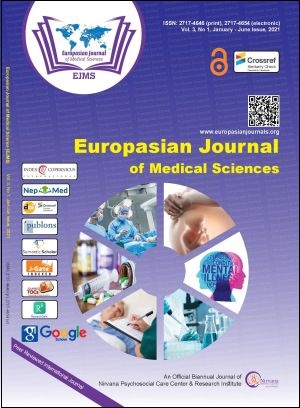Factors Related to Late Intrauterine Fetal Death in a Tertiary Referral Center: A Retrospective Study
Keywords:
Intra Uterine Fetal Death, IUFD, Risk factors, Maternal factors, Fetal factorsAbstract
Background: Intrauterine fetal death is a contributor of perinatal outcome and is an important indicator of the quality of antenatal care. Despite efforts, risk factors cannot be identified in cases of intrauterine fetal deaths. This study aims to identify the maternal, fetal, placental and cord related factors related to it.
Methods: It is a retrospective cross-sectional study conducted analyzing patients admitted with intrauterine fetal deaths after 28 weeks of pregnancy at Tribhuwan University Teaching Hospital from April 2019 to March 2020 using in hospital admission records of the patient. It was conducted after taking ethical approval from Institutional Review Committee (IRC) of Institute of Medicine (IOM). Data were collected from review of charts of individual patients in MS Excel and was analyzed using SPSS.
Results: There were 5496 births and 46 intrauterine fetal deaths during the study period giving stillbirth rate of 8 per 1000 births. It was common in the age group of 26-30 years (34.8%), 62.2% were from inside Kathmandu valley, 43.5% were just literate, 13% were illiterate, 84.8% were housewives, 56.5% were primigravida and 69.57% of the babies were preterm. Only four percent had previous history of intra uterine fetal deaths. Hypertensive disorders complicating pregnancy were found in 30.5% followed by heart disease in 10.9% of the mothers. There were no known co-morbidities in 26.1% of the patients. Out of total 46 cases, 62% were female and 38% were male. Two had Rh isoimmunization and four had congenital malformations. Placenta previa was seen in four percent and abruptio placenta in two percent. Twin pregnancy with diamniotic dichorionic placenta was present in four percent. Seventeen percent of the babies had cord around the neck and two percent had thrombosis of the umbilical cord.
Conclusion: Low level of maternal education and maternal comorbidities like hypertensive disorders complicating pregnancy were found to be most common factors seen in cases of intrauterine fetal deaths.
Downloads
Downloads
Published
How to Cite
Issue
Section
License
Copyright (c) 2021 Sandip Kuikel, Preezma Shrestha, Sunita Bajracharya, Sagar Poudel, Bijay Thapa

This work is licensed under a Creative Commons Attribution 4.0 International License.
The author(s) retain the ownership of the copyrights for their work published in EJMS without any restrictions. Upon submission, the author(s) grants EJMS a license to publish, including to display, store, copy, and reuse the published content.
License to Publish
By submitting a manuscript to EJMS, the author(s) grant the journal a non-exclusive license to:
- Publish and distribute the content in all formats, media, and platforms (both existing and future), while identifying EJMS as the original publisher.
- Reproduce, display, and store the content in both print and online formats, including institutional and digital repositories.
- Translate, adapt, and summarize the work, including reprints, extracts, and abstracts.
- Develop derivative works based on the original content.
- Include the work in electronic databases and provide links to third-party materials.
Creative Commons Licensing
In addition to EJMS’s publishing rights, authors grant third parties the right to use, share, and distribute their work under the Creative Commons Attribution 4.0 (CC BY 4.0) International License. This allows unrestricted use of the content, provided proper attribution is given to the original author(s) and the journal.

